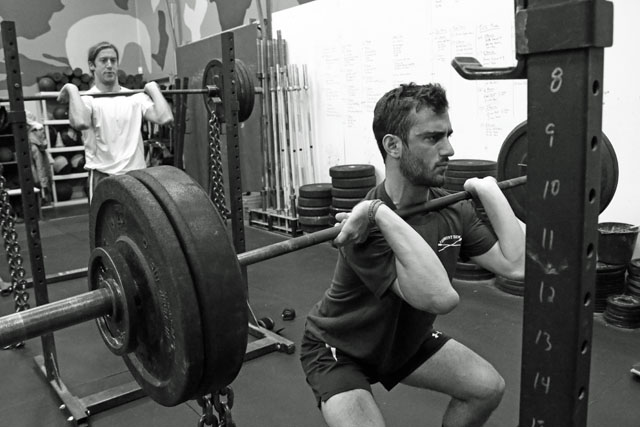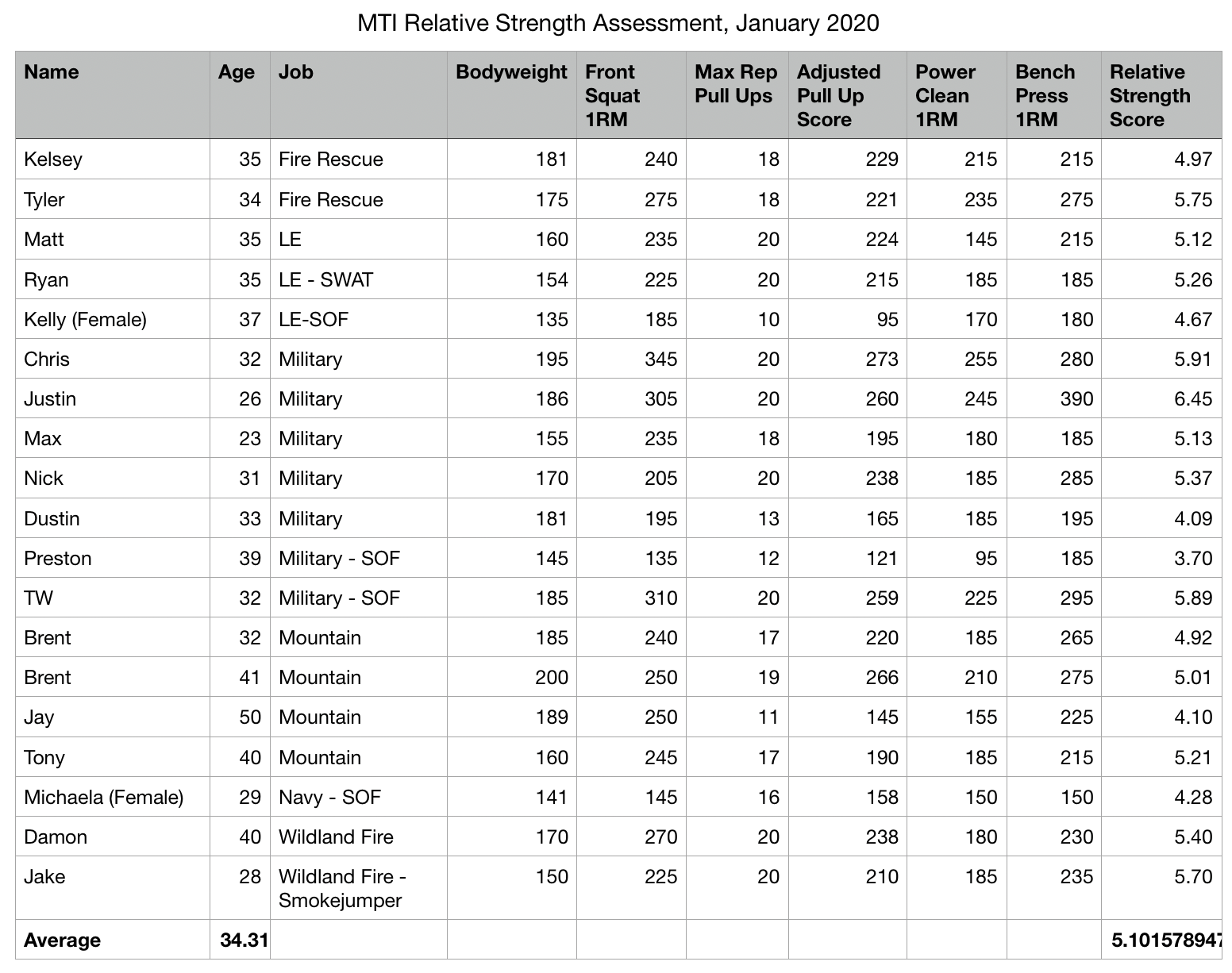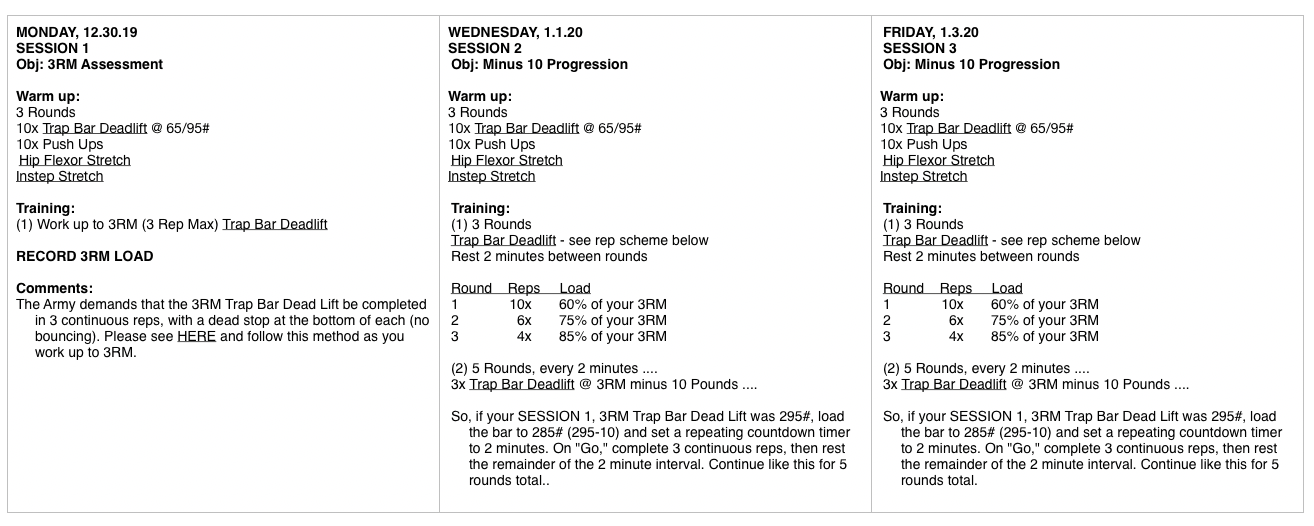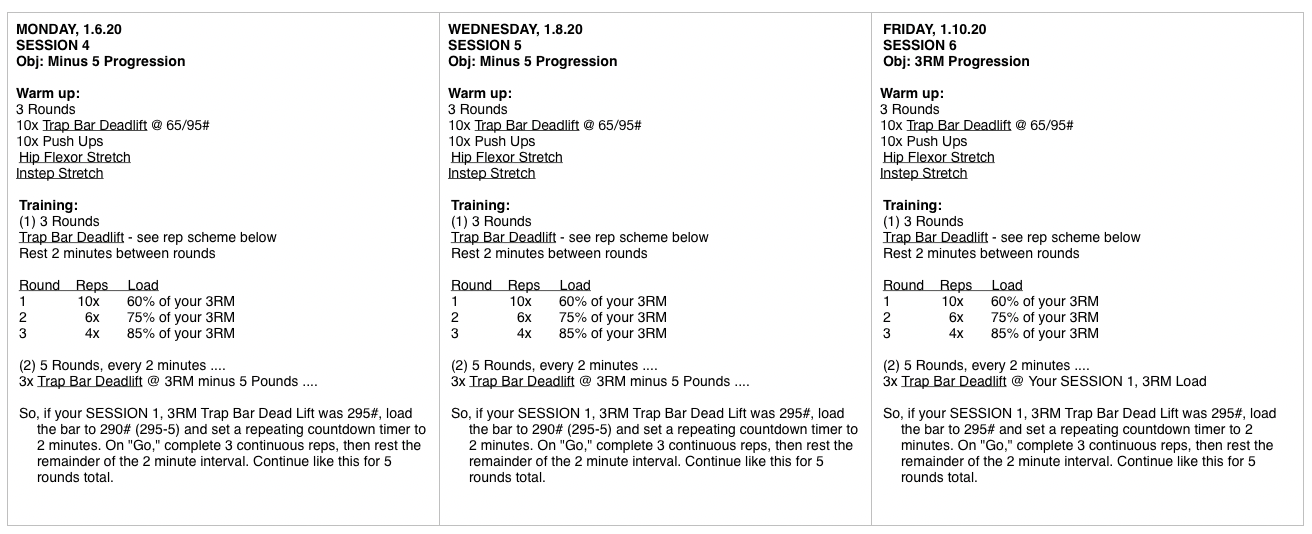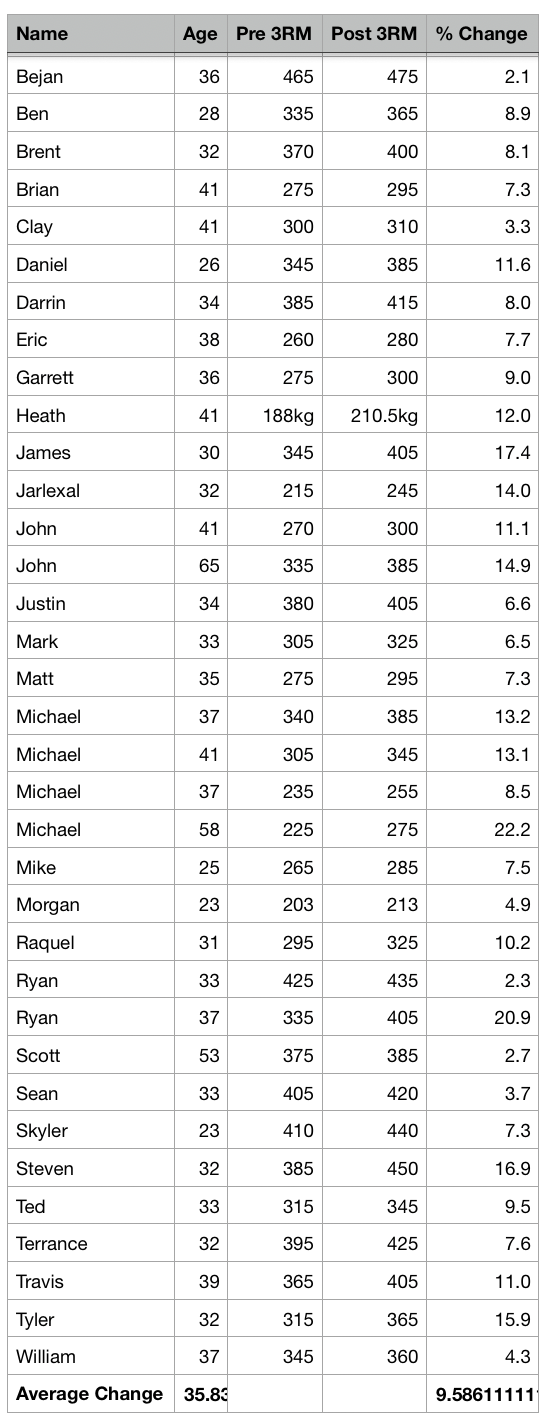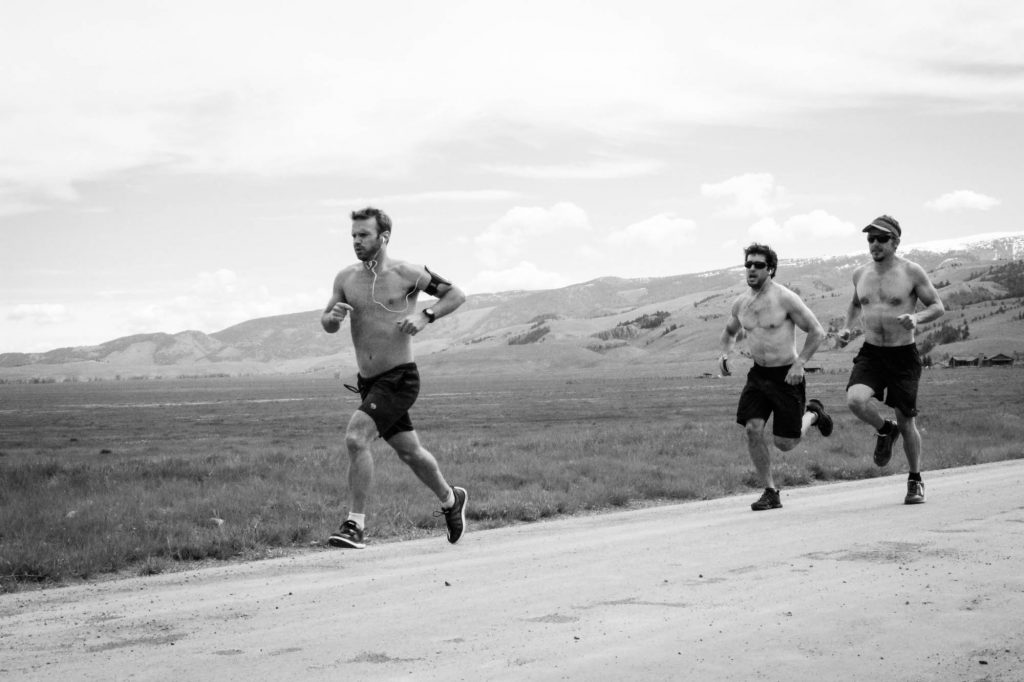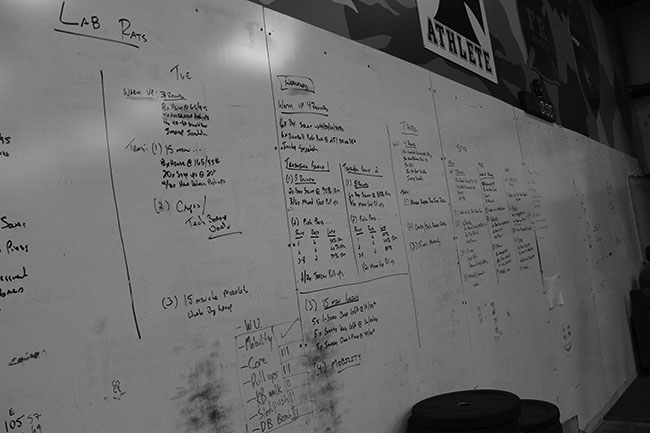QUESTION
I’ve just started Mountain Tactical programming after reading your blogs and articles for the last few years. Unfortunately about 2 weeks ago I ended up with a pretty good groin pull/lower ab strain while playing flag football. I’m a 41 year old New York City Firefighter whose in good shape and works out regularly. I’v been using Atomic Athlete”s programming for about 3 years. In that time I’ve done a lot of core and hip work and have been very happy with the results overall. However when I started playing football again this year after a decade layoff, I noticed a big hole i those areas. I now I’m not 21 anymore but I felt like weakness in that area severely limited my mobility (change of direction), and endurance much more than simple aging. I’m sure this is what led to my ultimate injury. My question is whats the best program to address this. I plan on starting the Firefighting cycles ASAP. Is there any other program that may help more.
ANSWER
In terms of your injury – I can’t help much there as to the cause.
Our Fire/Rescue programming found in the
Big Cat Series of plans does include lots of chassis integrity work, shuttle sprint repeats (with associated changes of direction) and tactical agility work – which includes changes of direction and level changes.
I can’t say however, if our stuff would have prevented your injury. It’s aimed at your job, not flag football. I would say that as we get older, and move away from team sports, the quick changes in direction, etc. fall away as most of us focus on strength and single-mode endurance. This is the major reason we developed and implemented our tactical agility programming – to keep athletes familiar with that type of explosive, quick, change of direction movement …. so the first time they have to do it isn’t in the real thing.
In terms of age decline, I can only speak for myself. I really started to feel knee stiffness at 44, and it continues to this day (I’m 51). This is the usual age-related arthritis. Recently, I’ve noticed some in my shoulders, but not nearly as acute or common. What this means practically, is I’m slower to warm up, and honestly don’t push loading in all squatting/lunging movements any more as the pain limits me.
Other areas of my performance – work cap, overall strength, endurance were solid and high until I hit 50, where everything fell back some. I can still hang with the young kids in the gym and on the mountain, but I don’t have the “turbo” I used to have.
I did get prescribed testosterone in my 40s and have used that for several years. It definitely helps with strength and recovery, but I’m not sure how it helps in terms of endurance. I would say that it also adds muscle mass, at least to me. I’d gladly trade a drop in 10 pounds of muscle for the benefit it would make to my endurance and impact to my joints, so I’m considering cycling off for a while to see how my body reacts. In general, I advise older guys to cut muscle mass some simply to reduce bodyweight – with the understanding that you’re eating clean and aren’t overly fat.
One thing the Fire/Rescue programming doesn’t focus on is general endurance – as it’s not part of the mission-direct fitness demands. You could include a nice, 3-6 mile run, 1x week to help address this, in addition to your flag football.
Good luck with MTI programming. Email questions.
– Rob
QUESTION
I’ve been following and really like the LE on ramp training plan, but I’m looking for programming that will incorporate some dumbbells for some increased strength. Any suggestions? Thank you,
ANSWER
Week 5 of the LE OnRamp Plan deploys barbell-focused free-weight training. You could jump ahead to it if you have barbell/plate and rack access.
If not,
Tequila is one of our LE Patrol/Detective base fitness training plans that uses dumbbells and/or kettlebells for its strength programming.
– Rob
QUESTION
I’m currently finishing up a training block where I am doing 3 days a week of endurance base building (long slow distance runs and rucks) and 2 days a week of heavy strength training (Tactical Barbell base building). Once I finish this I plan to roll into an MTI training block, possibly with a work capacity and endurance focus. My eventual goal would be to complete SFRE on a circa six month time horizon. Two questions – which program should I start with? Based on your other Q+As, I was thinking Humility. Second, I know from past experience that my chassis/core strength is weaker than it should be. How can I integrate chassis integrity circuits into current/future programming?
Thank you very much for your time and expertise.
ANSWER
Answer 1: Yes on Humility.
Answer 2: Nearly all MTI Base Fitness includes chassis integrity work, including
Humility – so you wouldn’t need to add any extra.
If you choose not to do MTI programming, you could integrate 2 sessions/week from the
Chassis Integrity Training Plan into whatever programming you’re doing. These circuits take around 20 minutes and could be either a warm-up or finisher to whatever programming you’re doing.
– Rob
QUESTION
Seeing if you could help recommend a training plan for me. I have put on about 20lbs from finishing my MBA the last 8 months and really want to hit it hard on getting back into shape. I typically do bodybuilding workouts and machine cardio but really looking to get back to being leaner and more conditioned similar to my time in the Army. I know cleaning up my eating is step one. I can train 4-5 times a week but would prefer a gym focused workout as Michigan winters aren’t great for my garage workouts/running outdoors. I guess I just feel overwhelmed looking at all the training programs so thought I would try to seek you guidance. Let me know if you need anymore information but its much appreciated.
ANSWER
If you’ve been training, but just put on weight, jump in with
Johnny. This is a multi-modal plan which concurrently trains strength, work capacity, endurance (running) and chassis integrity (core). You can either suck it up and run outside for the plan, run inside on a treadmill, or spin on a stationary bike. For spinning, just convert the estimated time you’d run to time and spin for that long. If you choose to run outside and get cold, run faster (ha, ha).
If you’ve been a total couch potato, start with the
Bodyweight Foundation Training Plan. This is still intense programming, but deploys initial assessments and scales strength work to your incoming fitness. It also includes running – and your options are the same as above.
– Rob
QUESTION
Hey coach, I have been a sloth since my daughter was born almost 3 years ago. I MTN bike a few days a week when I can but that is really all I have been doing. I have a squat rack a kettle bell and a jump rope. I. Looking at getting a rower. What kind of plans can you shoot my way for this limited home gym.
Previously I was a regular CrossFit guy 3-5 days a week. I have done your big 24 v1 and a few older plans you have had over the years.
ANSWER
I’d recommend you jumpstart your fitness with
Jedediah Smith. This is the first plan in our
Wilderness Series for Wilderness Professionals – game wardens, rangers, field biologists, etc., and concurrently trains strength, work capacity, mountain endurance (run, uphill movement under load) and chassis integrity (core).
Its strength work is all bodyweight based – so no need for equipment save a pull up bar, and it’s chassis integrity work is focused on the low back – our most vulnerable area.
– Rob
QUESTION
I’m currently working on the Ultimate Meathead Cycle and really enjoying it.
But I have a lot of time for recovery and taking care of my body right now, and would like to increase my volume, ideally to train 6 days out of the week. Is there another program I could stack with UMC?
Thank you for any guidance!
ANSWER
Quick answer is not really – if you’re interested in pushing your strength/upper body hypertrophy gains from the
Ultimate Meathead Cycle. You wouldn’t want to do any more strength/lifting. The three days in the plan are heavy, and lots of volume – plenty.
What UMC is not giving you is anyway endurance work …. so what I’d recommend is stick with the Friday’s off, but add in a moderate-paced, 3-5 mile run on Saturdays. This will retard your strength/mass gains somewhat from UMC, but help maintain some endurance and give your head another day of training.
– Rob
QUESTION
I am wanting to start with your Bodyweight Foundation, but I need work out in the garage while my baby is sleeping inside. Which means, running from the house on weekdays doesn’t really work. Can I sub step ups or something like that?
Thank you for all you do.
ANSWER
Step ups will work if you don’t have a treadmill. Assume 1/4 mile = 50 step ups, so 1 mile = 200 step ups for substitution purposes. Use a 16-18″ box/step if possible.
– Rob
QUESTION
I was turned on to your training plans by a buddy. I like what I see, but have a question regarding the schedule. I am an avid mountain biker riding at least 30-40 miles a week and race dirt bikes for fun. If I started your LE Plan I would have no desire to stop my usual training with mountain bikes and dirt bikes, so how would you recommend I fit those activities into your LE plan?
ANSWER
We believe tactical athletes should prioritize their work-related fitness training over recreational training. Simple reason is the danger of the job. I’m not going to lecture you – as a professional athlete you are responsible for your mission-direct fitness – but wanted to put that out front.
Two ways to integrate your riding:
1) Do two-a-days. Train LE programming early, and ride later.
2) Alternate between LE programming days, and riding. I.e. Monday – LE Programming, Tues – riding, Wed – LE Programming, Thur – riding, etc.
If you go with (2), follow the LE programming sessions in order – don’t skip around or ahead. The sessions are progressive – they build upon one another – and need to be completed in order.
If you go with MTI, start with
Whiskey, which is the first plan in our “
Spirits Packet” of plans for full-time LE Patrol/Detective. These plans concurrently train strength, work capacity, chassis integrity (core), short endurance and tactical agility. I’m assuming you know your way around a weight room.
Respectfully,
– Rob
QUESTION
I am about to start the bodyweight foundation plan. I have a trail near my house that is much more convenient for me to train on instead of drive 20 minutes to the closest track. My times will be slower because the elevation changes quite a bit, do people often substitute some exercises in these plans?
ANSWER
Not sure I understand your question. In terms of running – you can use trails, and for the intervals, just go at your “threshold pace” – as fast as you can.
– Rob
QUESTION
I was curious how long the strength gains would continue more long term.
I’ve been doing the Gladiator workout so I feel familiar with the protocol used in the mini study.
If I record my 1RM for Back Squat, Bench Press, Hinge Lift, Pull Up, and Barbell Complex over the next 4 to 6 months would it benefit you and MTI?
Out of curiosity what is the heaviest Barbell Complex Max Load that you’ve seen or recorded?
ANSWER
It depends on (1) programming and (2) Training age – or how long you’ve been weight training.
Programming – If you move from a strength-focused plan like Gladiator, to an endurance plan, or more balanced plan, your strength would either maintain or could slightly decrease. MTI programming, in general, is not designed for powerlifters or Oly lifters – it’s designed for professional mountain and tactical athletes, who have a variety of fitness demands.
Training age … the older your training age, the less the strength gains would endure. However, if you’re new to strength training, the gains could last longer.
Highest barbell complex? I observed one of my veteran lab rats make 175#, but I’m sure others could go higher. What I’ve never seen is someone get their bodyweight … now that would be awesome. I did have a vet female athlete who weighed 120-ish get 105# – which is pretty amazing. The vet I saw get 175# weighed around 200#. Both the vets mentioned here suffered in making the load – as you know, heavy barbell complexes can take you to dark places ….
My best ever is 135# … at a bodyweight of 155-160#. Push presses are the “crux” as you know … but I’d be scared to go any heavier.
– Rob
QUESTION
I’m a serving Royal Marines Commando in the UK. I’m taking on UKSF selection next year in the summer.
I’ve been a customer for a few months now, using your daily operator programmes ect. I noticed you have quite a few selection process training programmes, but nothing specific to UKSF selection for SAS and SBS.
I was just wandering if you were able to recommend a programme to take on to prepare for selection? Or would you be able to put something together?
If your not fully aware of what the selection process is, the main 2 parts of selection are firstly Hills, which is 3 weeks in the Brecon mountains. Every day yomping (marching) with 50lbs – 70lbs, over 15-20km at a speed of km per hour. First two weeks are just general yomping over the mountains and then the final week is test week, which culminates with a 20 hour yomp over 60km of mountains with 70lbs.
2nd main part is 6 weeks in the jungle. Which at high intensity, conducting jungle operations, recon, live firing. As well as carrying similar weights as hills, but through the jungle and in a tactical environment.
There are obviously lots of other aspects to the selection process, however these are the main physical tests that we are told to prepare for. We will also expect to be thrashed with high intensity runs and body weight workouts.
Hope this all makes sense?
Close to 500 people attend the selection every year, so if it was possible to put something together for your page, I’d imagine you would get a lot of interest.
Any help would be greatly appreciate, as I’ve really enjoyed your programming so far!
ANSWER
UK Athletes have used our
SFOD-D Selection Training Plan for SAS … as you probably know, SFOD-D selection is modeled after SAS selection – rucking intensive.
Not sure what SBS is? But regardless, I’d focus on programming for the first part of the selection – the rucking intensive stuff, and then expect that fitness to carry me through the jungle part. Honestly, programming for SAS is very intense and high volume – not much time for much other work.
Did this answer your question?
– Rob
QUESTION
Looking for some advice on restarting training after injury.
Exactly a year ago I completed the off season training program for endurance, then SF45 Delta and at the beginning of this year the ultra pre season program. Felt physically good then early into the 50 mile ultra plan I twisted an ankle quite badly and had to stop running and dropped my MTI programs. 3 months later I started back running gently now and then but 6 weeks ago tore a calf muscle in my other leg on a trail run – now only just walking without a limp. Classic case of too much too soon especially for a 60 year old.
I’ve lost a lot of conditioning this year and want to get back into my garage gym so welcome some advice on gentle but challenging progression using your programs. My ultra days may be over but I want to be able to enjoy shorter trail runs and big hikes again.
ANSWER
You might as well do some strength training since you can’t do much endurance, and the strength work in this plan is classic, assessment-based and progressed. Plus, the strength work will add some overall durability.
The running in the plan is short – so it’s walkable. The only thing I might recommend if your calf can handle it, is perhaps adding a 25# backpack. Walk/ruck the prescribed running distance in the plan. This will also get you outside.
Heal up!
– Rob
QUESTION
Got my retraining approved for tacp, still waiting for a school start date. I’m thinking it’ll be May/June next year. Here’s what I am thinking about to get ready.
TLU strength beginning first week of January.
Greek heroes AM + push up packet PM.
TACP schoolhouse plan just before going to the schoolhouse.
What do you think? Also should I take a full on week’s rest between each plan?
ANSWER
I’d recommend you jump right in with the
USAF TACP School Training Plan, then take a week off and roll into the Greek Hero plans until your 8 weeks out from the course, then repeat the TACP Plan.
Doing the TACP Course now will likely smoke you and totally suck …. but it will also help harden your mind and body. Then repeating it before your course, and seeing how much better you perform, will send you into the schoolhouse fit and confident.
– Rob
QUESTION
I recently had jaw surgery and during my recovery I can’t withstand any impact that would shake my jaw so no running or jumping. I plan to start the meathead marathon plan in late February for a marathon in April but in the mean time I have a few more weeks of recovery. Is there a plan you recommend for me to maintain a base fitness while I recover?
ANSWER
Seems like you should be able to lift, and you can replace the running in the plan with walking, or better, rucking with a 45+ pack. Modify/avoid exercises as needed to protect your jaw.
– Rob
QUESTION
My wife is a runner who has run marathons and multiple half marathons. She was training for her next marathon when we found out she was pregnant last year. During the delivery she developed diastasis recti and a small umbilical hernia. Do you have any plans to help her or recommendations on how to rehab this? We love the mountain tactical low back program but she is concerned that a lot of the exercises increase her intra-abdominal pressure. Any recommendations are appreciated.
ANSWER
I’m not a doctor and can’t help here. All of our core training does involve bracing or work of some type and will increase abdominal pressure.
What you could have her do is ruck (walk or fast walk) with a 15-25# pack …. this will add some gentle core work, and also get her moving and outside.
I’d recommend the
2-Mile Run Improvement Training Plan – but substitute rucking (walk or fast walk – no ruck running) for the prescribed running in the plan. I’d have her start the first week with a 15# pack, then bump it up to 25# for the remaining weeks.
This plan also includes bodyweight strength work and bodyweight core work. She could try the bodyweight strength work (leg blaster progression, push ups, pull ups), but if this aggravated her hernias – just skip it. As she works through the plan, injury recovers and she gains strength, she can add that stuff in gently on the non-rucking days as injury allows. Have her be smart and cautious.
Good thing about this is it includes assessments/progressions so she will be pushed and can see improvement.
– Rob
Subscribe to MTI's Newsletter - BETA

